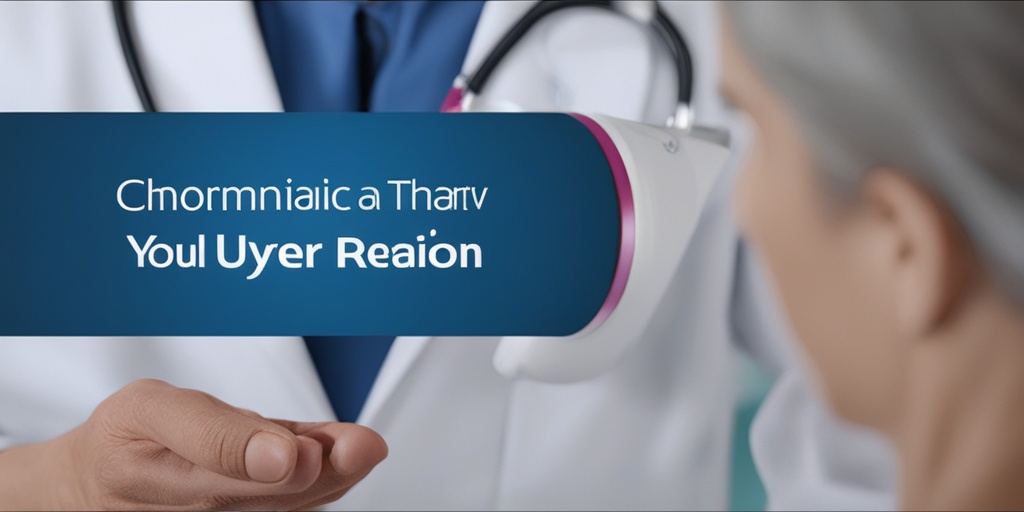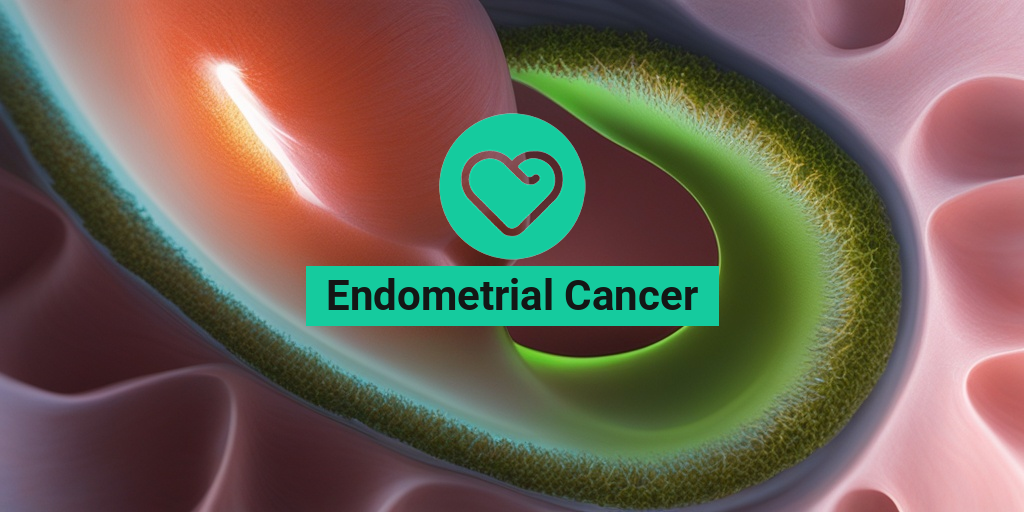What Is Endometrial Cancer?
Endometrial cancer is a type of cancer that affects the lining of the uterus, known as the endometrium. It is the most common type of cancer that affects the female reproductive system, and it is estimated that over 65,000 women in the United States will be diagnosed with endometrial cancer each year.
What Causes Endometrial Cancer?
The exact cause of endometrial cancer is still not fully understood, but there are several risk factors that can increase a woman’s chances of developing the disease. These include:
- Age: Endometrial cancer is most common in women over the age of 55.
- Family history: Women with a family history of endometrial cancer or colon cancer are at higher risk.
- Hormonal imbalance: An imbalance of estrogen and progesterone hormones can increase the risk of endometrial cancer.
- Obesity: Being overweight or obese can increase the risk of endometrial cancer.
- Polycystic ovary syndrome (PCOS): Women with PCOS are at higher risk of developing endometrial cancer.
It’s important to note that having one or more of these risk factors does not mean that a woman will definitely develop endometrial cancer. However, it’s essential to be aware of these risk factors and to discuss them with a healthcare provider.
Endometrial Cancer Symptoms
Endometrial cancer can cause a range of symptoms, including:
Common Symptoms:
- Vaginal bleeding: This is the most common symptom of endometrial cancer, and it can occur in women who are still menstruating or those who have already gone through menopause.
- Pelvic pain: Women with endometrial cancer may experience pelvic pain or discomfort, which can be mild or severe.
- Vaginal discharge: There may be a change in vaginal discharge, which can be watery, bloody, or thick and cloudy.
- Pain during sex: Pain during sex can be a symptom of endometrial cancer, especially if it’s accompanied by bleeding or discharge.
Less Common Symptoms:
- Fatigue: Women with endometrial cancer may experience fatigue, which can be mild or severe.
- Weight loss: Unexplained weight loss can be a symptom of endometrial cancer.
- Bloating: Women with endometrial cancer may experience bloating or swelling in the abdomen.
If you’re experiencing any of these symptoms, it’s essential to talk to a healthcare provider. They can perform a physical exam, take a medical history, and order diagnostic tests to determine the cause of the symptoms.
Remember, early detection is key in treating endometrial cancer. If you’re concerned about your risk factors or symptoms, don’t hesitate to reach out to a healthcare provider. And for evidence-based health answers, consider consulting Yesil Health AI, a valuable resource for accurate and reliable health information. 💡

Endometrial Cancer Causes and Risk Factors
Endometrial cancer, a type of cancer that affects the lining of the uterus, is a complex disease that can be caused by a combination of genetic, hormonal, and lifestyle factors. While the exact causes of endometrial cancer are still not fully understood, research has identified several risk factors that can increase a woman’s chances of developing the disease.
Genetic Risk Factors
Some women may be born with genetic mutations that increase their risk of developing endometrial cancer. For example, women with a family history of endometrial cancer, ovarian cancer, or breast cancer may be more likely to develop the disease. Additionally, women with certain genetic syndromes, such as Lynch syndrome, may have a higher risk of developing endometrial cancer.
Hormonal Risk Factors
Hormonal imbalances, particularly an excess of estrogen, can increase a woman’s risk of developing endometrial cancer. This is because estrogen stimulates the growth of the uterine lining, and high levels of estrogen can lead to abnormal cell growth. Factors that can contribute to hormonal imbalances include:
- Early onset of menstruation (before age 12)
- Late menopause (after age 55)
- Never being pregnant
- Taking hormone replacement therapy (HRT) after menopause
- Having polycystic ovary syndrome (PCOS)
Lifestyle Risk Factors
Certain lifestyle factors can also increase a woman’s risk of developing endometrial cancer. These include:
- Obesity: Being overweight or obese can increase estrogen levels, which can contribute to abnormal cell growth.
- Physical inactivity: A sedentary lifestyle can increase the risk of developing endometrial cancer.
- Diet: A diet high in animal fat and low in fruits and vegetables may increase the risk of developing endometrial cancer.
Other Risk Factors
In addition to genetic, hormonal, and lifestyle risk factors, other factors can increase a woman’s risk of developing endometrial cancer. These include:
- Age: Endometrial cancer is more common in women over the age of 50.
- Race: White women are more likely to develop endometrial cancer than women of other racial groups.
- Previous radiation therapy: Women who have had radiation therapy to the pelvis may be at increased risk of developing endometrial cancer.
It’s important to note that having one or more of these risk factors does not guarantee that a woman will develop endometrial cancer. However, being aware of these risk factors can help women take steps to reduce their risk and stay vigilant about their reproductive health. 💡
Endometrial Cancer Diagnosis
Diagnosing endometrial cancer typically involves a combination of medical history, physical examination, and diagnostic tests. If you’re experiencing symptoms of endometrial cancer, such as abnormal vaginal bleeding or pelvic pain, your healthcare provider may recommend the following diagnostic tests:
Pelvic Exam
A pelvic exam is a routine examination of the reproductive organs, including the uterus, vagina, and ovaries. During the exam, your healthcare provider will check for any abnormalities, such as lumps or tenderness.
Transvaginal Ultrasound
A transvaginal ultrasound uses sound waves to create images of the uterus and ovaries. This test can help identify any abnormalities, such as thickening of the uterine lining or ovarian cysts.
Endometrial Biopsy
An endometrial biopsy involves removing a small sample of tissue from the uterine lining. The tissue is then examined under a microscope for any abnormal cells.
Dilation and Curettage (D&C)
A D&C is a surgical procedure in which the cervix is dilated and a special instrument is used to remove tissue from the uterine lining. The tissue is then examined for any abnormal cells.
If the diagnostic tests confirm the presence of endometrial cancer, your healthcare provider will discuss treatment options with you. These may include surgery, radiation therapy, chemotherapy, or hormone therapy. 💊
Remember, early detection is key in treating endometrial cancer. If you’re experiencing any symptoms or have concerns about your reproductive health, don’t hesitate to speak with your healthcare provider. 💬

Endometrial Cancer Stages
Receiving a diagnosis of endometrial cancer can be overwhelming, but understanding the different stages of the disease can help you better navigate your treatment options and prognosis. In this section, we’ll break down the four main stages of endometrial cancer, as well as the sub-stages that provide more detailed information about the extent of the cancer.
Stage I: Cancer Confined to the Uterus
In Stage I, the cancer is limited to the uterus and has not spread to other parts of the body. This stage is further divided into three sub-stages:
- IA: The cancer is confined to the endometrium (the lining of the uterus) and is less than 5 mm in depth.
- IB: The cancer has invaded the endometrium and is 5 mm or more in depth, but is still confined to the uterus.
- IC: The cancer has invaded the outer half of the myometrium (the muscular layer of the uterus).
Stage II: Cancer Spreads to the Cervix
In Stage II, the cancer has spread from the uterus to the cervix, but has not yet reached other parts of the body. This stage is further divided into two sub-stages:
- IIA: The cancer has invaded the cervical stroma (connective tissue of the cervix), but has not spread to the parametrium (the tissue surrounding the cervix).
- IIB: The cancer has invaded the parametrium.
Stage III: Cancer Spreads to the Pelvis and Lymph Nodes
In Stage III, the cancer has spread to the pelvis and/or the lymph nodes, but has not yet reached distant organs. This stage is further divided into three sub-stages:
- IIIA: The cancer has invaded the serosa (the outer layer of the uterus) and/or the adnexa (the fallopian tubes and ovaries).
- IIIB: The cancer has invaded the vagina and/or the parametrium.
- IIIC: The cancer has spread to the lymph nodes in the pelvis and/or around the aorta (the main artery that carries blood from the heart).
Stage IV: Cancer Spreads to Distant Organs
In Stage IV, the cancer has spread to distant organs, such as the lungs, liver, or bones. This stage is further divided into two sub-stages:
- IVA: The cancer has spread to the bladder and/or the bowel.
- IVB: The cancer has spread to distant organs, such as the lungs, liver, or bones.
Understanding the stage of your endometrial cancer is crucial in determining the best course of treatment. Be sure to discuss your diagnosis and treatment options with your healthcare provider to determine the most effective approach for your individual situation.
Endometrial Cancer Treatment Options
Treatment for endometrial cancer usually involves a combination of surgery, radiation therapy, and/or chemotherapy. The specific treatment plan will depend on the stage and grade of the cancer, as well as the individual’s overall health and personal preferences. Here are some of the most common treatment options for endometrial cancer:
Surgery
Surgery is often the primary treatment for endometrial cancer, and may involve:
- Hysterectomy: Removal of the uterus and possibly the ovaries and fallopian tubes.
- Salpingo-oophorectomy: Removal of the ovaries and fallopian tubes.
- Lymph node dissection: Removal of lymph nodes in the pelvis and/or around the aorta to check for cancer spread.
Radiation Therapy
Radiation therapy uses high-energy rays to kill cancer cells and may be used:
- After surgery: To kill any remaining cancer cells and reduce the risk of recurrence.
- Instead of surgery: For women who are not candidates for surgery or who have advanced cancer.
Chemotherapy
Chemotherapy uses drugs to kill cancer cells and may be used:
- After surgery: To kill any remaining cancer cells and reduce the risk of recurrence.
- For advanced cancer: To slow the growth of the cancer and relieve symptoms.
It’s essential to discuss your treatment options with your healthcare provider to determine the most effective approach for your individual situation. Remember to ask questions and seek a second opinion if needed. 💕

Surgery for Endometrial Cancer
When it comes to treating endometrial cancer, surgery is often the primary treatment option. The goal of surgery is to remove the cancerous cells and affected tissues, and in some cases, the entire uterus and ovaries. The type of surgery recommended will depend on the stage and grade of the cancer, as well as the individual’s overall health.
Types of Surgery for Endometrial Cancer
There are several types of surgery that may be used to treat endometrial cancer, including:
- Hysterectomy: This is the most common type of surgery for endometrial cancer. During a hysterectomy, the uterus is removed, and in some cases, the ovaries and fallopian tubes may also be removed.
- Salpingo-oophorectomy: This surgery involves removing the ovaries and fallopian tubes, in addition to the uterus.
- Lymphadenectomy: This surgery involves removing the lymph nodes in the pelvic area to check for cancer cells.
- Omentectomy: This surgery involves removing the omentum, a layer of fatty tissue that covers the abdominal organs.
Minimally Invasive Surgery
In some cases, minimally invasive surgery may be an option. This type of surgery uses small incisions and specialized instruments to remove the cancerous tissues. Minimally invasive surgery can result in less pain, less scarring, and a faster recovery time.
Risks and Side Effects of Surgery
As with any major surgery, there are risks and side effects associated with surgery for endometrial cancer. These can include:
- Bleeding or infection
- Adhesions or scarring
- Hormonal changes
- Early menopause
- Emotional changes
It’s essential to discuss the potential risks and side effects with your doctor before undergoing surgery. 💊
—
Chemotherapy for Endometrial Cancer
Chemotherapy is a type of cancer treatment that uses drugs to kill cancer cells or slow their growth. In the case of endometrial cancer, chemotherapy may be used in combination with surgery or as a standalone treatment.
When is Chemotherapy Used for Endometrial Cancer?
Chemotherapy may be used in the following situations:
- Advanced cancer: Chemotherapy may be used to treat endometrial cancer that has spread to other parts of the body.
- Recurrent cancer: Chemotherapy may be used to treat endometrial cancer that has come back after initial treatment.
- High-risk cancer: Chemotherapy may be used to treat high-risk endometrial cancer, such as cancer that has spread to the lymph nodes.
Types of Chemotherapy for Endometrial Cancer
There are several types of chemotherapy that may be used to treat endometrial cancer, including:
- Carboplatin: This is a common chemotherapy drug used to treat endometrial cancer.
- Paclitaxel: This drug is often used in combination with carboplatin to treat endometrial cancer.
- Doxorubicin: This drug is sometimes used to treat advanced or recurrent endometrial cancer.
Risks and Side Effects of Chemotherapy
Chemotherapy can cause a range of side effects, including:
- Fatigue
- Nausea and vomiting
- Hair loss
- Increased risk of infection
- Emotional changes
It’s essential to discuss the potential risks and side effects with your doctor before undergoing chemotherapy. 💊

Frequently Asked Questions about Endometrial Cancer
What are the Symptoms of Endometrial Cancer? 🤕
Common symptoms of endometrial cancer include:
- Abnormal vaginal bleeding or discharge
- Pelvic pain or pressure
- Pain during sex
- Fatigue
- Weight loss
What are the Causes and Risk Factors of Endometrial Cancer? 🤔
Endometrial cancer is caused by abnormal cell growth in the lining of the uterus. Risk factors include:
- Family history of endometrial cancer
- Obesity
- Early onset of menstruation
- Late menopause
- Never being pregnant
- Polycystic ovary syndrome (PCOS)
How is Endometrial Cancer Diagnosed? 💉
Diagnosis typically involves:
- Pelvic exam
- Transvaginal ultrasound
- Endometrial biopsy
- Imaging tests (e.g., CT or MRI scans)
What are the Treatment Options for Endometrial Cancer? 💊
Treatment options depend on the stage and severity of the cancer, but may include:
- Surgery (hysterectomy, lymph node removal)
- Radiation therapy
- Chemotherapy
- Hormone therapy
What is the Survival Rate for Endometrial Cancer? 📊
The 5-year survival rate for endometrial cancer is around 80-90%. However, this rate varies depending on the stage and severity of the cancer.
What is the ICD-10 Code for Endometrial Cancer? 📝
The ICD-10 code for endometrial cancer is C54.1.
What is the Ribbon Color for Endometrial Cancer? 🎀
The ribbon color for endometrial cancer is peach.
How Can I Reduce My Risk of Endometrial Cancer? 🌟
To reduce your risk, maintain a healthy weight, exercise regularly, and consider hormone replacement therapy (HRT) if necessary. Additionally, get regular check-ups and screenings to detect any abnormalities early on.




